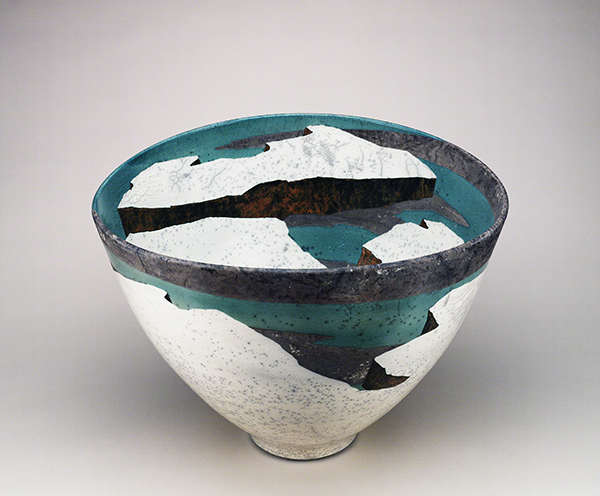Looking Ahead to Winter: Wayne Higby Ceramics
It just snowed where I live and winter is fast approaching. I personally love winter, snow and all, but I know many New Englanders dread it. That’s why there are a lot of “snowbirds” from here who flee to Florida during the winter. Maybe I can convince some folks to recognize the beauty of winter through a work of art? I’ve been mad for Wayne Higby’s work for quite a while, and you know how I like to share my personal art epiphanies!
 |
| Wayne Higby (born 1943, U.S.), Frozen Day Mesa, 1984. Raku-fired earthenware, 12 ½" x 19" x 16 ½" (31.8 x 48.3 x 41.9 cm). Courtesy of the Philadelphia Museum of Art. © 2022 Wayne Higby. (PMA-8635) |
Like many of Higby’s ceramics from the 1970s and 1980s, Frozen Day Mesa’s raku surface design clearly references landscape. Raku glaze was pioneered in Japan during the Muromachi Period (1392–1573). The name of this lead glaze means “happiness in the accident,” “enjoyment,” or “ease.” Related to the spontaneous impulse emphasized in Zen Buddhism, raku was developed for ceramic wares used in the tea ceremony, which gained importance during the same period.
Japanese potters used raku glazes primarily on earthenware, which is Higby's clay of choice. Raku glazes are applied either with brushing, spraying, or sponging. Some of the glazes produce crackling, as seen in Frozen Day Mesa. In contrast with regular glazing, raku works are removed immediately from the kiln and cooled in water or in the open air, rather than being allowed to gradually cool in the kiln. Both smoke and fire in the kiln are used to create unpredictable and unique results in glazing.
The evolution of ceramics from “craft” to “fine art” began with the Arts and Crafts Movement of the latter half of the 1800s in Britain, and later the U.S. The movement began with the philosophy of integrating fine art aesthetics and craftsmanship into functional art. This philosophy spread throughout Europe, and by the early 1900s was encapsulated in such schools as the German Bauhaus (1919–1933) and the artist group Vienna Secession (1897–1905).
Between the 1940s and 1960s in Western art, ceramics came into their own as stand-alone works of fine art rather than simply utilitarian works. Large-scale, permanent sculptures in clay and painting mixed with ceramics—in the work of artists such as Joan Miró (1893–1983) and Pablo Picasso (1881–1973)—were explored. In the U.S., California and New York became centers of the redefinition of ceramics as fine art.
Two significant artists gave impetus to a blossoming of the ceramics-as-art movement in California: Peter Voulkos (1924–2002) and Robert Arneson (1930–1992). An Abstract Expressionist artist, Voulkos created ceramic sculptures and opened a school of ceramics (1954) at the Otis Institute in Los Angeles. Arneson created Pop Art-inspired ceramic sculptures starting in the early 1960s. These artists proved that ceramic artists did not just make pots. Higby is one of the most innovative of the second generation of ceramic artists to come out of the post-World War II American ceramic studio movement.
Born in Colorado Springs, Colorado, Higby earned a BFA from the University of Colorado (1966) and an MFA from the University of Michigan Ann Arbor (1968). Higby’s ceramic works are deeply reflective pieces that represent memories of his youth spent horseback riding along rocky trails in Colorado. Even his pieces that are nominally functional express landscape in a variety of ways. His landscapes are influenced by the simplicity of Chinese and Japanese ink paintings.
Higby first drew attention to his work with his groundbreaking use of raku glazing and stoneware in the 1970s. After a trip to China in 1991, he began to create works in slabs of porcelain with raku glaze. For Higby, his continued exploration of landscape in ceramic works is a longing not only for past memories, but also as an escape from the hectic modern world. He offers viewers the chance to reminisce on their own memories of landscapes.
Correlations to Davis programs: The Visual Experience 4E: 10.10; Experience Art 1E: 2.3; Experience Clay 3E: Chapter 7; A Community Connection 2E: 2.6; Explorations in Art 2E Grade 3: 6.7; Discovering Art History 4E: 2.2


Comments